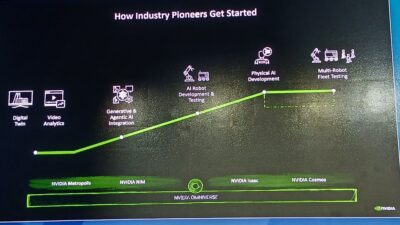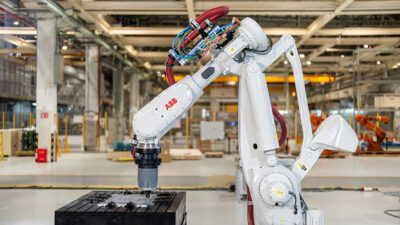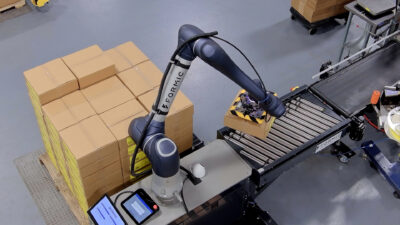Collaborative robots have come a long way in the last several years and recent innovations such as embedded vision and machine learning have allowed them to do more.

Collaborative robots have changed dramatically since the first installation of a collaborative robotic arm just over a decade ago. They have continued to improve in their safety features, the number, and diversity of tasks they can automate, as well as their efficiency in industrial settings.
Collaborative robots automate tasks that traditional industrial robots cannot, especially when combined with the latest technology, pushing the limits of what’s possible with robotic automation. Three innovations have allowed them to accomplish more tasks on the manufacturing floor.
1. Advanced grippers
Grippers have evolved to become an intelligent and advanced part of automation and are essential to the core function of collaborative robots. New innovations such as soft grippers allow collaborative robots to handle soft or hard parts by using flexible materials and fluid or air pressure. Some new grippers leverage electro-adhesion technology or a multitude of sensors for more accurate, automated gripper guidance. Better grippers are reducing the need for retooling and drain over, improving productivity and flexibility in collaborative robots.
2. Embedded vision
Embedded vision systems have been an important part of the evolution of collaborative robots and will continue to be a vital component moving forward. Today, embedded vision systems are capable of detecting the presence of humans and avoiding unsafe operations or harmful collisions by triggering the shutdown of the robot. They’re also used to help robots more accurately identify the location, shape, and orientation of a part for greater flexibility.
3. Machine learning
Machine learning is making great advances in collaborative robots, helping to drastically reduce integration and programming requirements. Some collaborative robots can be trained by hand-guidance, while others are beginning to be able to pick and place objects they’ve never seen before. Machine learning significantly improves the flexibility of collaborative robots. Even greater innovations from machine learning and artificial intelligence are likely around the corner.
The latest technologies are advancing the capabilities of collaborative robots, in turn expanding the possibilities of robotic automation. Today’s technological innovations enhance the abilities of collaborative robots, but even more radical innovations are just on the horizon.
This article originally appeared on the Robotics Online Blog. Robotic Industries Association (RIA) is a part of the Association for Advancing Automation (A3), a CFE Media content partner. Edited by Chris Vavra, production editor, Control Engineering, CFE Media, [email protected].



